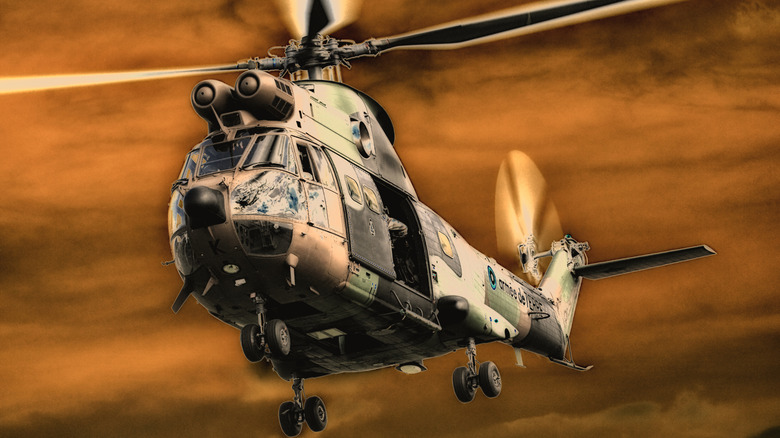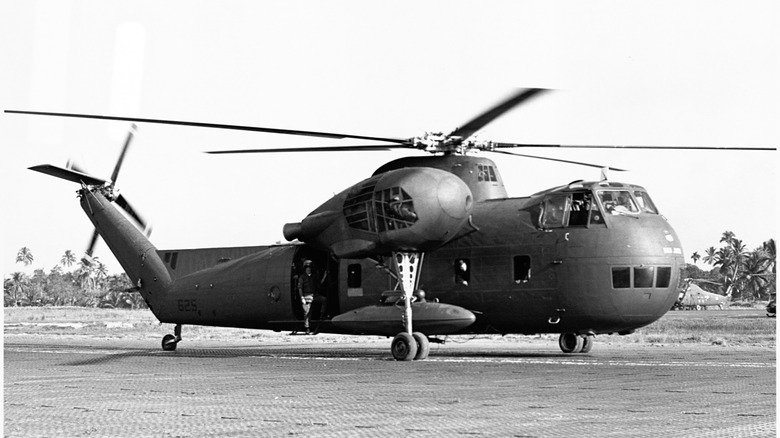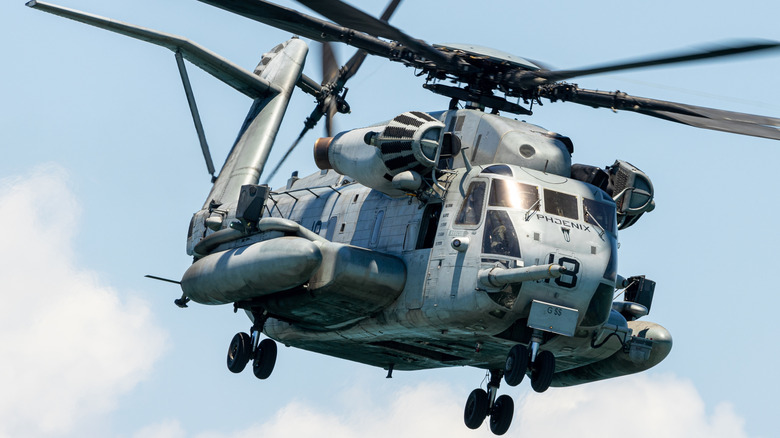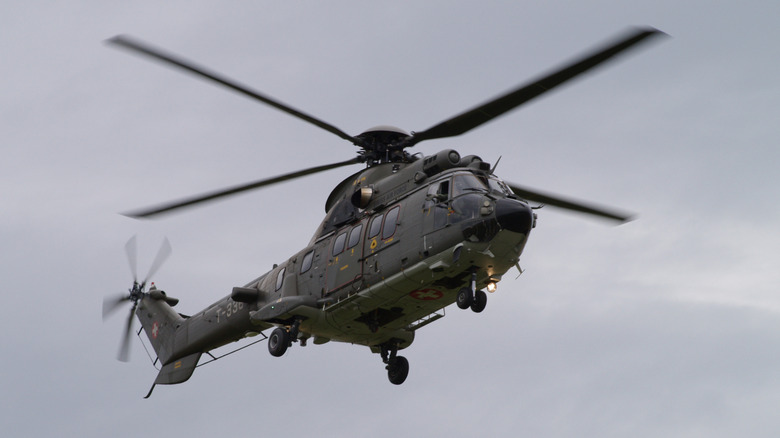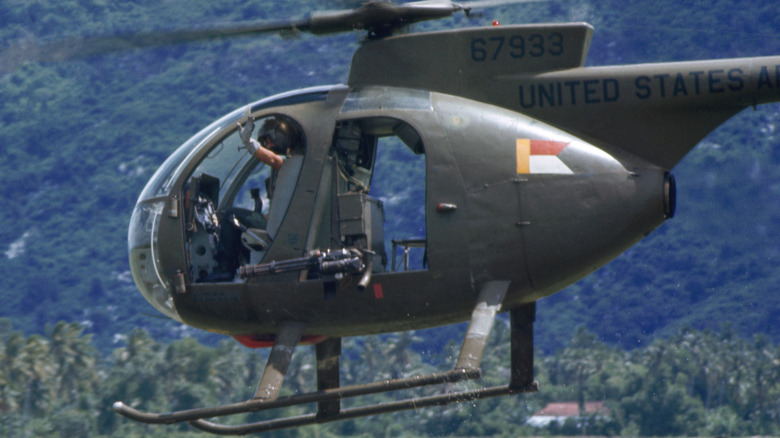4 Of The Worst Military Helicopters Of All Time
Helicopters are incredibly useful aircraft that can take off and land without need for a runway. They can then hover in place over a location, which is ideal for extracting and inserting troops or cargo expediently. The introduction of the helicopter has changed the military landscape forever, giving the military the perfect vehicle to fulfill multiple roles, including transporting troops, cargo, medevac, and attack enemy personnel. Sometimes they become the best attack helicopters ever used in war, but every once in awhile a chopper doesn't make the grade.
It's no different than any other vehicle the military ends up purchasing. They go through a series of tests with defense contractors where the new vehicle has to check off all the necessary boxes and if it does so, it's put into the field. However, sometimes when it enters active duty, there may be some eye opening deficiencies. Mechanical issues can arise that weren't present or simple design choices make the helicopter less than ideal for continual use. Whatever the issue, there are always going to be some military vehicles that are inferior to others. Some helicopters end up having a higher than normal crash rate.
It's not uncommon for the military to continue flying helicopters despite excessive crashes, though. That will more often than not lead to the military increasing safety training for its pilots. It's also not unheard of for a dangerous helicopter to be a favorite for pilots. Here are some of the worst military helicopters.
CH-37 Mojave
While it's not necessary for aircraft to be aesthetically pleasing, it can sometimes be a tell that it's not going to be useful if it's ugly. Exhibit A: The CH-37 Mojave. This chopper came about after the U.S. Marine Corps saw a need for a large transport helicopter in the Korean War. The first Mojave flew in 1953 and entered service three years later. For the following decade was known as the largest helicopter outside of the U.S.S.R . The Marine Corps intended to procure 150 Mojaves, but, despite it breaking three different world records, the Commandant of the Marine Corps cut that number down to 55.
His concern was that "...its combat radius and ability to hover out of ground effect (hovering at a height above the ground of less than the helicopter's rotor diameter) was less than anticipated," according to U.S. Navy records. Then there was the matter of its payload capacity, which posed a problem. The chopper itself weighed around 20,800 lbs. and could carry over 20 troops before exceeding its maximum takeoff weight of 31,000 lbs. That gave it a "useful" load of over 10,000-lbs. However, that 10,000-lbs. sounds more useful than it was because it didn't account for fuel — significantly impacting how much it could carry.
Both the U.S. Army and Marine Corps deployed the Mojave in Vietnam, but by the late '60s the helicopter was replaced by the CH-54 Tarhe and CH-47 Chinooks because of their more powerful turboshaft engines, rendering the Mojave and its piston engines obsolete.
The CH-53 Stallion has an unusually high accident rate
There's a lot to admire about the legendary CH-53 Sea Stallion, including its spacious cabin that could accommodate up to 38 troops with all of their gear and ability to carry 8,000 pounds internally or 13,000 pounds externally. It's a heavy-lift chopper the U.S. military have favored since 1967, when it served in the Vietnam War. Since then, Sikorsky has produced through the CH-53E Super Stallion. It's a helicopter that's known as the largest and heaviest helicopter in the U.S. military. Unfortunately, its reputation is marred by a string of tragic accidents.
Between 1967 and 1971, the Sea Stallion — CH-53A through CH-53D variations — used by the Marine Corps suffered 14 accidents that resulted in 105 deaths, not including the same model of helicopter used by other branches in the same time period. The CH-53 overall between 1967 and 2024, between all of the U.S. military branches and other nations that use it, has been the cause of roughly 180 accidents that have killed 761 people.
Mechanical issues continue to plague the Super Stallion even today. As recently as Dec. 20, 2024, Marines with the 3rd Marine Aircraft Wing were forced to land suddenly when an engine on the CH-53E Super Stallion caught fire mid-flight. Rich Martindell, a former Air Force accident investigator, told News Nation, "The normal rate for Marine helicopters is about 2.2 accidents per 100,000 hours. The Sea Stallion is running about 5.9. So it's almost two times more dangerous than the average helicopter."
The Puma SA-330 has a high record of crashes
The Puma SA-330 helicopter is a twin-engine medium transport helicopter that first flew in 1965 and entered service across multiple nations in 1971. It was built with two Turbomeca Turmo 111C4 turbines, and four blades made it more agile than one might expect from looking at it. While it was a fine aircraft that could get the job done — it could carry 16 passengers (12 troops who aren't part of the aircrew) or up to 2 tons of cargo — it has had an excessively high crash rate. The version the U.K. Royal Air Force used was the H.C. 1 model, and in a 37-year span (1974 to 2011) there were 18 incidents resulting in 29 fatalities.
It was a helicopter the R.A.F. used to extract and insert U.K. special forces in Iraq between 2003 and 2009, so one might expect the crashes to be combat-related. Unfortunately, not — mechanical malfunction caused the majority of the incidents. To look at the overall data, not just one country's, the numbers are more concerning. The SA-330 has a recored 213 incidents, resulting in 462 fatalities overall, according to Aviation Safety Network.
There were three crashes alone in the same year it entered service, which isn't a high number per se but off-putting for a new craft.
The Hughes OH-6 Cayuse was a dangerous favorite
The Hughes OH-6 Cayuse, commonly referred to as "Loach," is a small single-engine scout helicopter that entered service in 1966. It is one of the oldest military helicopters still in use today. Its design led to it breaking several records, including speed, endurance, and rate of climb. This made it an effective hunter-killer in Vietnam, allowing pilots to hover as low as 10 feet off the ground to find obscured enemies. They weren't defenseless in battle either, boasting a combination of grenade launchers, miniguns, unguided rockets, and anti-tank guided missiles.
However, the Loach's hull was constructed out of thin plexiglass metal, which might as well have been paper mache, attributing to its high rate of being shot down. Despite how easy it was for enemy combatants to shoot down the Loach, the helicopter remained a favorite amongst Vietnam pilots because it was designed in such a way that every passenger was ensured to survive a crash. Some pilots felt that if they were going to crash, they wanted to do it in a OH-6 Cayuse.
On paper, the Loach doesn't look like a helicopter any pilot or passenger would want to get in. Between 1964 and 2024 it has been involved in nearly 1,400 incidents, and over 500 passengers have lost their lives. Not every incident is a result of combat, though. Some OH-6s have been used by private companies and law enforcement where mechanical issues have resulted in emergency landings or collisions.
